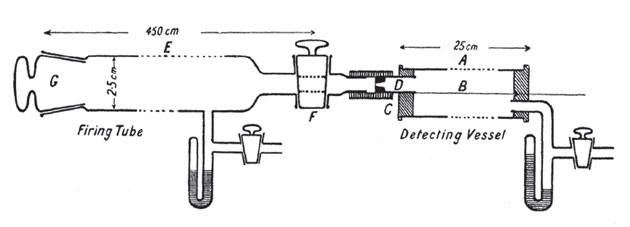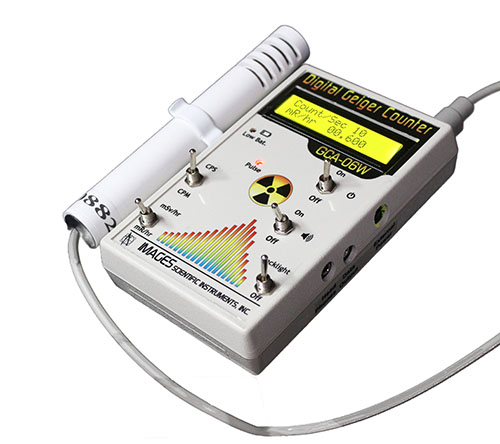This guide explores the history, use, and significance of the Geiger counter, a vital scientific instrument for detecting radiation. The Geiger counter has been used by scientists, medical professionals, and safety experts for over 100 years, making it one of the most enduring scientific inventions.
Archive PageThe Geiger counter is a device used to detect radiation as well as to display levels of radiation. Simple in concept if not in design, it has been an essential tool in both scientific research and public safety. Its history can be divided into two major periods: its initial development and manufacture, and its updating and continued application in modern times. Understanding the full history of the device shows its impact on radiation science and its ongoing role in safeguarding individuals from radiation exposure in laboratories, hospitals, and the wider environment.
German physicist Hans Geiger developed the original Geiger counter in 1908 while collaborating with Ernest Rutherford at Manchester University. They were researching alpha particles from radioactive substances and required an effective method of detecting and quantifying such small emissions. Until then, radiation could only be measured indirectly, usually with photographic plates or fluorescence screens, which were neither precise nor fast. Geiger's device allowed individual radiation particles to be counted directly by amplifying the electrical charge produced when a particle ionized gas in a tube.
Twenty years later, in 1928, Geiger and his graduate student Walther Müller improved the device, creating the Geiger–Müller counter. This device could detect not only alpha particles but also beta particles and gamma rays, making it far more versatile. The new design used a sealed tube filled with an inert gas such as helium or argon and a wire electrode down the center. When ionizing radiation entered the tube, it caused a small electrical discharge that produced a "click" or pulse. The durability, portability, and simplicity of this principle made the Geiger–Müller counter suitable for widespread scientific use.
By the 1930s, Geiger counters were standard tools for physicists studying atomic structure, cosmic rays, and radioactive decay. They were essential to early nuclear physics, enabling discoveries that would form the foundation for nuclear power and medical radiology. Without the invention of the Geiger counter, many crucial experiments in particle physics and nuclear chemistry would have been impossible.

Early Geiger Counter by Hans Geiger (1908)
After its invention, the Geiger counter became crucial in scientific research, especially in the 1940s. Its most notable use was during the Manhattan Project, the secret U.S. nuclear weapons development project. Geiger counters measured radiation in laboratories and factories to protect workers handling uranium and plutonium. These measurements were critical both for safety and for ensuring precise control of fission experiments.
Post-World War II, Geiger counters became common in universities, government labs, and hospitals. Students used them to detect radioactivity in experiments, while doctors monitored patients who had received radiation therapy or X-rays. During the Cold War, concerns about nuclear fallout made Geiger counters household names. Civilians rented them to check safety after nuclear testing, and military personnel used them in potential nuclear zones.
In the 1950s and 1960s, the Geiger counter symbolized both the promise and the peril of the nuclear age. Its ticking sound became associated with danger, scientific achievement, and humanity’s quest to control and understand nuclear energy.
Today, more than a century after its creation, the Geiger counter remains widely used. Modern devices feature digital readouts, higher sensitivity, and data logging that allows readings to be analyzed electronically. Portable designs enable environmental testing, laboratory work, and amateur mineral prospecting.
In medicine, Geiger counters help protect patients and staff from overdose by monitoring contamination and shielding effectiveness. In nuclear power plants, they detect radiation in reactors and the surrounding environment, ensuring safety and prompt response to leaks.
Environmental scientists also use Geiger counters to monitor contaminated soil and natural background radiation. Following disasters like the Chornobyl (1986) and Fukushima (2011) meltdowns, these devices helped establish safety perimeters and coordinate cleanup efforts. Citizen scientists also report radiation measurements online, promoting transparency and public awareness.
Despite newer technologies like scintillation counters and semiconductor detectors, the Geiger counter remains popular for its simplicity, affordability, and reliability, proving that early 20th-century science continues to meet modern needs.

GCA-06W Professional Digital Geiger Counter by Images Scientific Instruments
The Geiger counter is one of the most important scientific instruments ever created. It has expanded human knowledge of radiation and atomic physics while protecting health. From laboratory instrument to public safety symbol, it remains vital for education, research, and environmental monitoring. Its century-long service is a testament to enduring human ingenuity.
 Archive Page
Archive Page